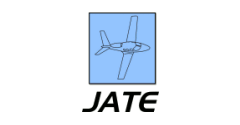Abstract
The aviation work environment has one of the highest accident rates of any industry sector in the United States, resulting in significant costs for both employee injuries and equipment damage. In fact, injury rates exceed rates found in areas that are widely recognized as hazardous, such as construction and mining, and it is estimated that aircraft ground damage costs are as high as 5 billion to 10 billion dollars per year. Purdue University’s Aviation Technology Department has conducted numerous safety and human factors studies in the past decade encompassing maintenance and repair operations, corporate flight departments, and over ten major airlines. Based on the accumulated knowledge gained from these studies, a systematic method to reduce workplace costs associated with aircraft damage and worker injuries has been developed. This concept paper summarizes the resulting best practices and methods, which are centered on four main themes: (1) organizational infrastructure, (2) systematic process, (3) measurement, and (4) education. Successfully addressing components related to these four areas has been a major driver and the key to successful ramp operations in the commercial passenger aviation sector. This framework has been used to successfully develop, implement, and maintain and manage human factors sustainability, which refers to creating and maintaining a sustainable environment in terms of the human factors needed to safely and efficiently conduct operations in the aviation environment.
Recommended Citation
Hubbard, Sarah M. and Lopp, Denver
(2015)
"An Integrated Framework for Fostering Human Factor Sustainability and Increased Safety in Aviation Ramp Operations,"
Journal of Aviation Technology and Engineering:
Vol. 5:
Iss.
1, Article 7.
Available at: https://doi.org/10.7771/2159-6670.1113


